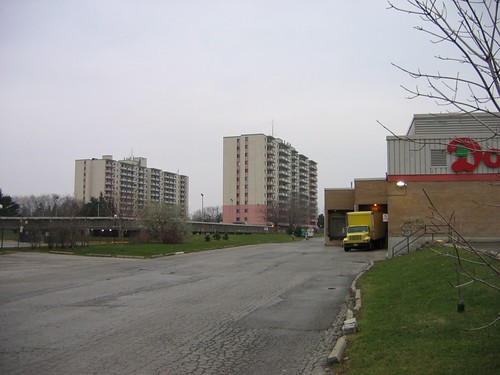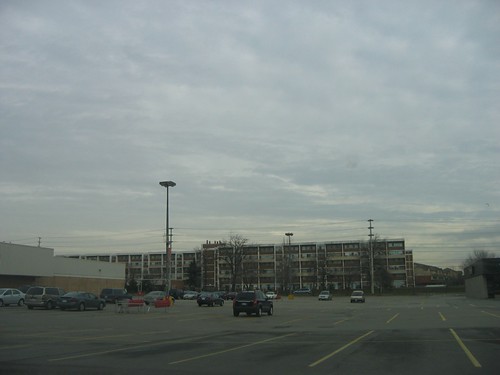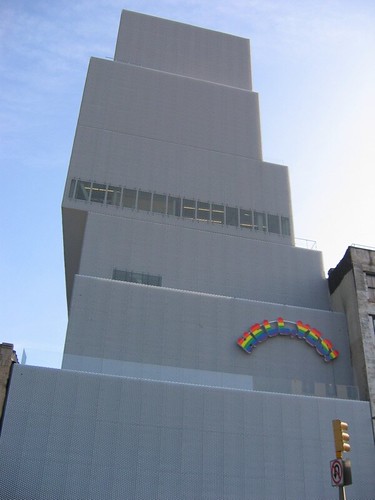
take a look at those cakes!
At times, walking around New York can make me feel like I’m a little piece of metal hovering in the air between two electrically charged plates– one labelled: ‘old’ and the other: ‘new.’ It is a delightful state of limbo that can, at any given moment, collapse into either direction.
The new New Museum is certainly about as ‘new’ as it gets, rising up over the Bowery’s facade of restaurant supply stores like a wobbly stack of supermarket cake boxes. Although undeniably imposing, the building somehow avoids the ‘stuck up’ materialistic feeling that so characterizes the new MoMA. The interior spaces are utilitarian to a fault and the building’s exterior skin plays peek-a-boo with the street through an expanded metal scrim that looks like its made from scaled up Home Depot plaster lathing. Though the building cost a ton of money, it was witty of the curators to fill the opening show, entitled ‘Unmonumental: The Object in the 21st Century,’ with an exhibition of creatively rearranged garbage. While some of these assemblages were quite delightful, for me the highlight of the visit was seeing the documentation of the Museum as Hub project, displayed on the building’s top floor. The work coming out of Seoul’s Insa Art Space was particularly intriguing. Sangdon Kim’s Discoplan is an amazing, interventionist piece where the artist collaborates with residents of a Korean neighbourhood to build home-made flying machines that deliver clover seeds into the fenced off grounds of a former American military base. During its period of operation, the base had a traumatic relationship with the surrounding population, especially after a soldier stationed there brutally murdered a local woman. The U.S. army left the base’s soil badly contaminated and the artist-inspired seed bombardment of its grounds will help phytoremediate it.
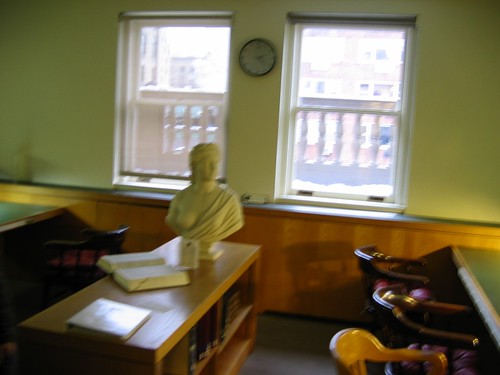
reading room
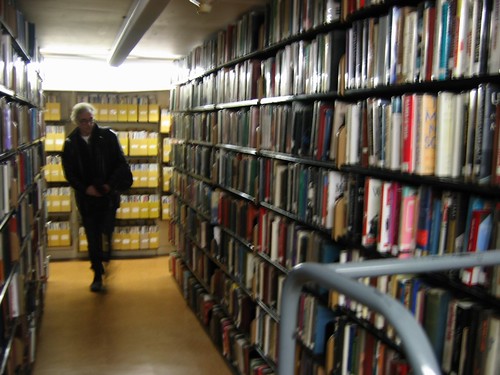
stacks
With the Disneyfication of Times Square and the obliteration of iconic cultural landmarks like CBGB’s, it can seem at times that old New York is disappearing. It’s still there though, if you know where to look, peeking out coyly through the palimpsest of more recent development. A case in point is the New York Society Library, which has been in operation since 1754. Our pal Larry gave us a tour of its cosseted reading rooms on East 79th St. The place has a mystical, out of timeness to it, small yet somehow limitless — reminiscent perhaps of Borges’ Library of Babel. I could easily imagine a secret sect of bibliophiles inhabiting this place, spending their nights on little cots folded out between the tightly spaced shelves, so they would never have to be separated from their beloved volumes. After the perusing the stacks we stumbled over to the Metropolitan Museum to marvel at the exquisitely lustrous panels of the Ghiberti Gates, each one sealed in its own nitrogen-filled vitrine to protect the fragile gold leaf from our corrosive twenty-first century atmosphere. We wound up the evening toasting Borges and eating our dinner under the motorized windmills and Sancho Panza statuettes of El Quijote on West 23rd St. Pierre Menard would have been proud.



